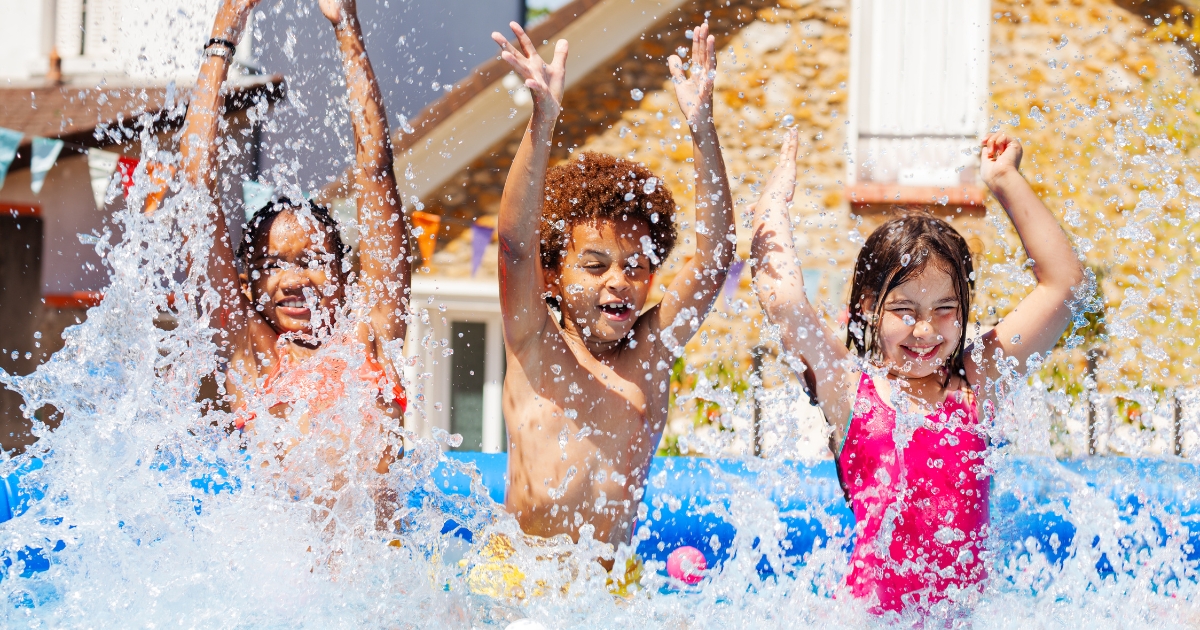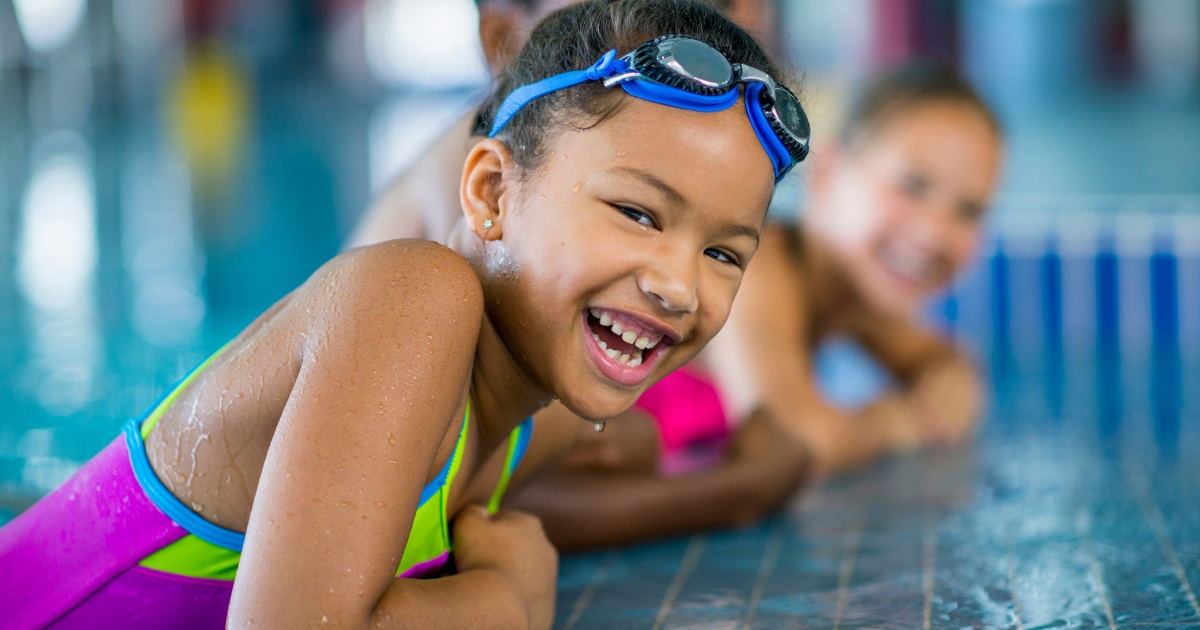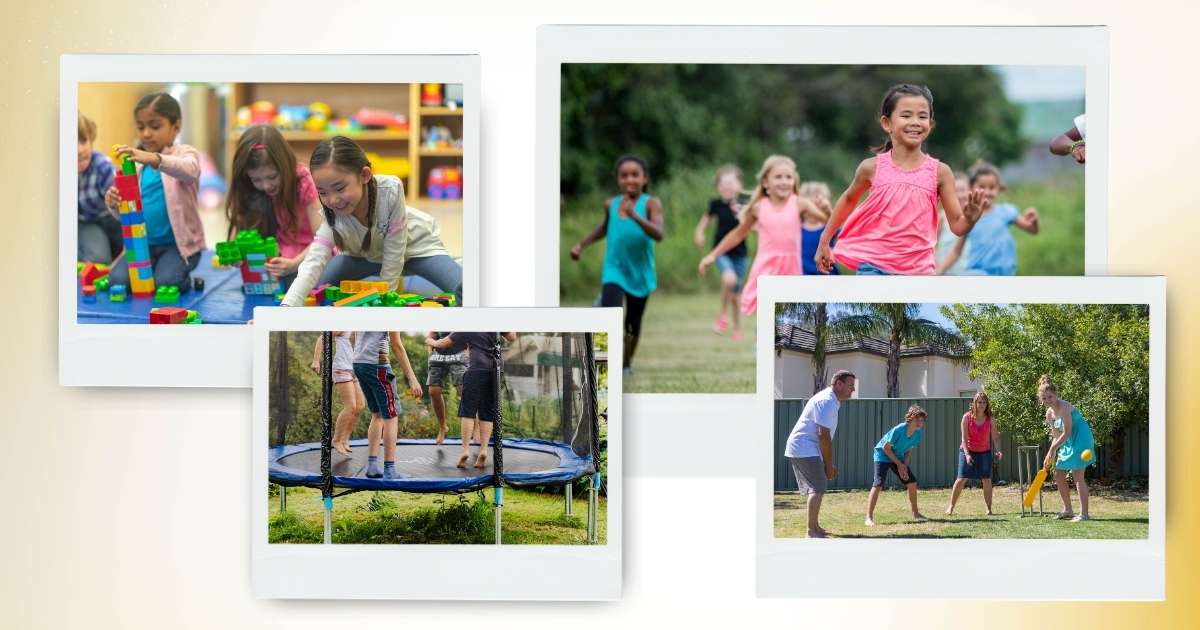Homeschooling opens the door to creative and flexible ways of teaching, and the swimming pool is no exception. The pool can be your classroom, gym, and science lab all rolled into one. Through structured activities and freestyle play, children can explore subjects like physics, mathematics, science, and even creative problem-solving while also staying active.
Below, we outline engaging, educational pool activities that make a splash in your homeschooling routine.
1. Learning Through Play In Water
Water play provides a natural sensory environment for children, enhancing their ability to focus and learn. The feeling of buoyancy, resistance, and movement in the water creates a tactile experience that encourages curiosity and experiential learning. Here are some ways water activities lead to valuable lessons:
Experimenting with Basic Physics
The swimming pool is a simple way to explain foundational physics concepts in a hands-on way. Children can experience the principles of buoyancy, resistance, and hydrodynamics through fun experiments:
- Does It Sink or Float? Give your kids a variety of objects such as a spoon, toy boat, and rubber duck. Encourage them to predict which will float and then test their hypotheses. This fosters critical thinking and introduces buoyancy.
- Resistance Challenge: Have children move their hands slowly and then quickly through the water to feel the varying resistance. You can extend the activity by having them try swimming with their fingers spread versus closed to see how water resistance affects movement.
Developing Gross Motor Skills
Water activities naturally promote physical growth and coordination. Encouraging movement through play builds strength and balance:
- Relay Races: Organize swim races where kids retrieve floating toys. They’ll develop motor skills and spatial awareness while swimming and tracking their goals.
- Underwater Diving: Drop weighted sticks or rings into the pool and ask your child to retrieve them. This helps strengthen their lung capacity and enhances focus.
Strengthening Numeracy Skills
Water games can turn abstract math into something tangible and fun:
- Counting and Patterns: Ask children to count laps, strokes, or the number of objects collected. You can introduce patterns by having them complete tasks in sequences like swim, grab, and toss.
- Addition and Subtraction in Play: If you toss four floating toys in the pool and remove one, ask, “How many are left?” You can extend this to multiplication when working with multiples of objects.
Social Interaction and Emotional Learning
If multiple children are involved, the pool becomes a space for teamwork and communication. Cooperative activities such as forming swim routines or playing catch in the water build essential social skills. Kids learn to take turns, compromise, and cheer each other on, boosting their emotional intelligence.
Water play becomes a multisensory adventure that makes learning memorable and enjoyable.

2. Homeschool Water Science Experiments
The swimming pool sets the perfect stage for exciting science experiments that can bring the homeschool curriculum to life. Through interactive activities, children can explore real-world applications of scientific principles. Here are some simple science experiments to integrate into pool time:
Surface Tension and Soap
Teach your kids about surface tension with this easy experiment:
- What to Do: Place a paperclip gently on the water’s surface and observe how it floats. Then, add a drop of dish soap and watch the clip sink as the soap alters the surface tension.
- Learning Point: Discuss how surface tension works and why the soap disrupts it, demonstrating the role of molecular bonds.
Water Displacement and Volume
Show them how volume relates to water displacement:
- Activity: Provide a floating container and have them push it down into the water, then measure how much the water level rises. This visualizes the principle of displacement they’ll encounter in physics and engineering studies.
Exploring Water Pressure
Create experiments that emphasize water pressure. For instance:
- What You Need: Two plastic bottles with holes in them. Seal one with tape before submerging both bottles in the pool.
- Activity: Submerge the bottles, remove the tape from one, and note how water rushes in. Explain how pressure differences cause this effect.
Temperature Testing
Pools offer excellent opportunities for understanding how heat affects water:
- Use thermometers to measure water temperature in the sunlit shallow end versus deeper shaded areas. Discuss how the sun warms water and what this teaches about heat absorption and energy transfer.
Salt and Ice Experiment
Demonstrate how salt changes the melting process of ice:
- What You Need: Ice cubes and salt buckets.
- Activity: After observing ice melt in water, sprinkle salt on it and see the noticeably faster melting. Explain how salt disrupts the freezing point of water molecules.
These activities integrate theoretical understanding with hands-on practice, cementing scientific concepts in an engaging and absorbing way.
3. Encouraging Creativity And Problem-Solving Skills
The pool is a fantastic space for letting kids explore their creativity and critical thinking through imaginative games and challenges. Introducing problem-solving games not only entertains but also develops cognitive skills. Here are some activities that inspire creative thinking:
Start with scavenger hunts in the water. Place objects at varying depths and locations in the pool, then set up obstacles such as floating toys and noodles. Pose questions like:
- “Can you find the ring without touching the floating noodle?”
- “What’s the fastest way to return with all five objects?”
Encouraging children to optimize their approach fosters problem-solving and decision-making capabilities. They might work on conserving energy by floating between trips or finding clever ways to collect items while navigating obstacles.
Another excellent idea is water-based storytelling. Kids can pretend to be explorers in search of underwater treasures or marine biologists tagging fascinating creatures. Encourage them to weave elaborate stories around their tasks, fostering their narrative and imaginative skills.
Problem-solving aligns perfectly with creativity when tasked with open-ended challenges. For example, ask your child to “construct” a makeshift pool bridge using floating materials. How can they stabilize it without letting it collapse? These activities combine STEM, resourcefulness, and innovation—all while being fun.
4. Structuring Pool Learning For Success
To make the most of pool time, plan activities thoughtfully. Structure will keep sessions engaging and productive while ensuring your children maximize the educational opportunities. Here’s how you can create a winning routine for educational pool activities:
- Set Clear Learning Objectives: Start by deciding what you want to accomplish. Whether it’s reinforcing math, introducing basic physics, or sparking creativity, having a plan will focus the session.
- Designate Pool Days: Create consistency with planned pool learning days, such as “Monday Science Splash” or “Floating Fridays.” Having a set schedule helps kids look forward to learning without feeling overwhelmed.
- Combine Warm-Ups with Learning: Begin each session with simple warm-up games to ease into the learning activities. Toss a ball back and forth or play tag in the water—these games double as physical activities to get their muscles moving.
- Safety Considerations: Always prioritize safety. Have younger children wear floaties or vests, and always supervise. Use pool toys with non-toxic materials to ensure safety during water games.
- Encourage Documentation: Take photos of their science experiments or record their lap-swimming progress. Not only does this allow you to keep track of achievements, but revisiting documented milestones can also boost motivation for future pool sessions.
A little preparation can go a long way in turning the pool into a dynamic learning hub.
Swimming pools offer much more than recreation—they are an invaluable resource for hands-on homeschool education. From learning buoyancy to solving scavenger hunt puzzles, the pool provides a space where lessons and fun intersect seamlessly. By thoughtfully incorporating structured activities alongside open play, you can teach your kids science, math, problem-solving, and cooperative skills while making cherished memories. These educational pool activities fit kids of all ages, making it the perfect addition to any homeschooling routine.





